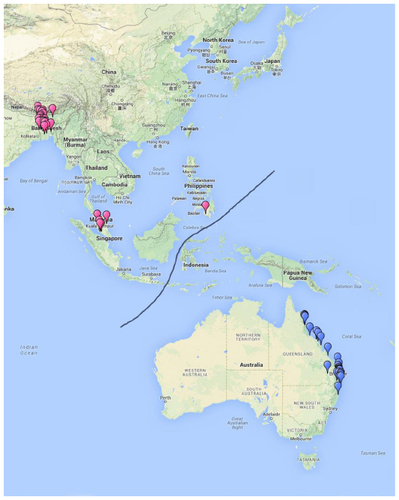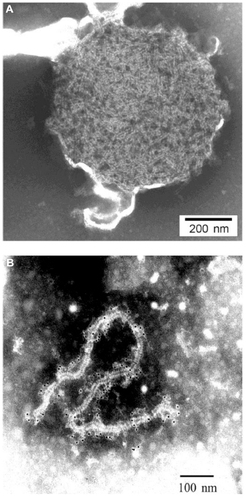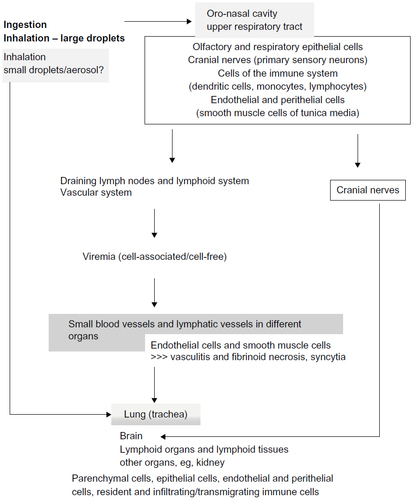Figures & data
Figure 1 Geographical locations of up to date reported Hendra virus (blue) and Nipah virus (pink) outbreaks.

Figure 2 Structure of the Nipah virus virion core.

Figure 3 Generalized summary of the current understanding of pathogenesis. The figure represents an overall picture covering a number of susceptible species.

Table 1 Summary of vaccine efficacy reports
